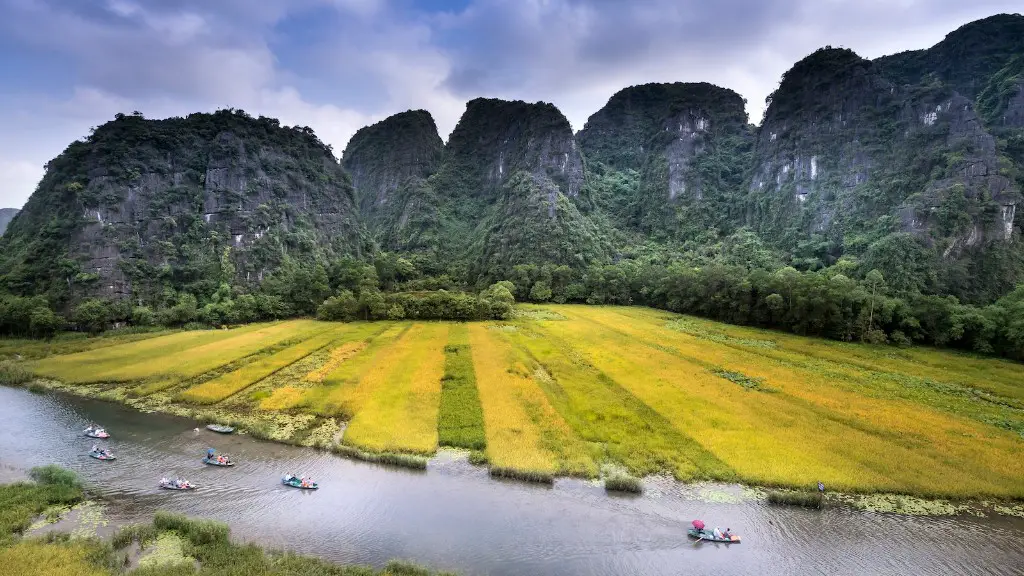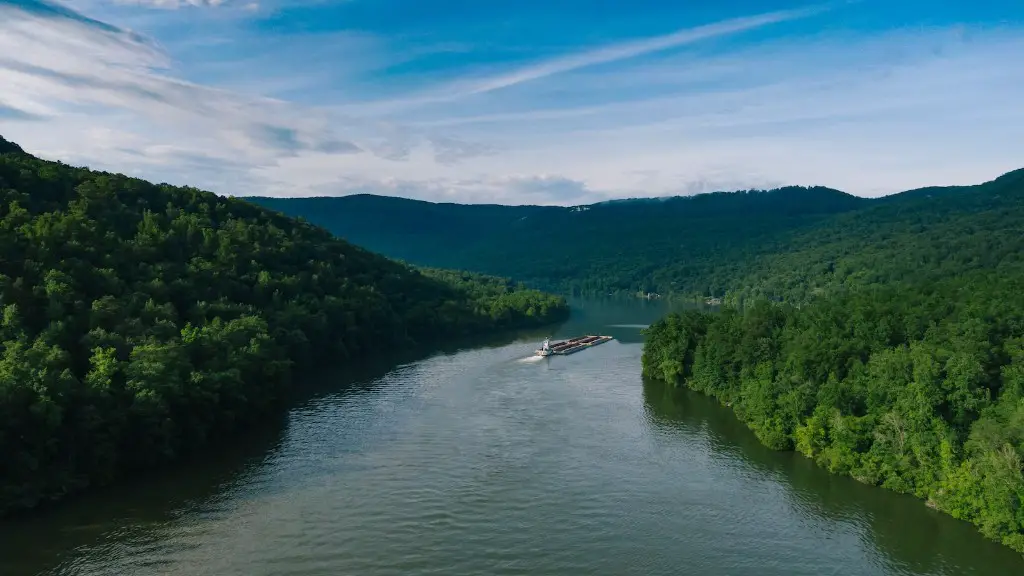When it comes to biodiversity, the Yangtze River region is known to have one of the highest levels in the world. Not only has it served as a major river and habitat for humans and neighboring communities ever since, but it also hosts an impressive number of animal and plant species. Estimates on the number of species living in the Yangtze River varies based on which species one counts and where one draws the line between ‘species’ and ‘sub-species’. This article looks at the available research on the number of species present in this important river system and how this number of species relates to global levels of biodiversity.
In recent years, the biodiversity of the Yangtze River has drastically reduced due to dam construction and other human activities. Species such as the Chinese paddlefish, the Yangtze finless porpoise, the Yangtze sturgeon, and the Chinese alligator, have all been threatened by the construction of the Three Gorges Dam and other human activities. According to a 2008 study, the number of fish species native to the Yangtze River has also decreased significantly over the past 30 years.
Exact estimates of the number of species present in the Yangtze River system are difficult to come by, as different sources provide different results due to different methodologies. A 2017 study published in the journal Science China estimated that the Yangtze River supports a minimum of 8,200 species of plants and animals, with the range of estimates varying from 5,300 to 21,000 species. Estimates from other sources, however, are much lower and range from 4,000 to 6,000 species.
The various plant and animal species present in the Yangtze River ecosystem provide a number of important ecological services to the environment and humans. Studies have found that the presence of fish, plants, and other aquatic organisms play an important role in promoting water quality, preventing soil erosion, and providing food and livelihoods for humans. The presence of biodiverse habitats also helps to mitigate floods, enhance water retention, maintain the natural water cycle, and protect against extreme weather events.
The decrease of species in the Yangtze River has been linked to a number of factors, including habitat destruction, over-exploitation of resources, environmental degradation, construction of dams and other water works, and pollution. As the threats to the Yangtze’s biodiversity increase, conservation efforts have become increasingly important to protect the remaining species and preserve the global biodiversity contained within the Yangtze River.
The decrease in species in the Yangtze River is part of the larger global trend of biodiversity loss in terrestrial and aquatic ecosystems. Experts warn that this trend is not only bad for wildlife, but for humans too, as the decrease in biodiversity translates into fewer resources and a less resilient ecosystem. Despite the challenges, conservation efforts within the Yangtze River can be seen as a model for how other ecosystems around the world can be protected and conserved.
Environmental Effects
The changes occurring in the Yangtze River’s biodiversity have had a direct impact on its environment. Researchers have noted that certain species, such as the Chinesealligator, have become extinct due to water pollution, over-fishing, and the destruction of their habitats. The destruction of habitats and ecosystems can also have a profound effect on the balance of the entire region. For example, in the area around the Three Gorges Dam, the destruction of aquatic habitats on both sides of the dam has lead to a decrease in water quality and an increase in sedimentation.
The destruction of habitats due to human activities has also resulted in the displacement of species from their natural habitats and their migration to other areas. This migration has the potential to cause an imbalance in the natural ecosystems of the areas they move to. For example, in the middle and lower reaches of the Yangtze River, there has been an increase in the number of non-native species since 1999, as species from other parts of the world have arrived and increased in number, threatening native species.
Furthermore, the decrease in species in the Yangtze River has been linked to the collapsing of several fisheries in the area. This, in turn, has had an effect on local economies and populations, as communities have lost an important source of food and livelihoods. The decrease in fish stocks has also lead to increased nutrient run-off, as fewer fish are available to consume the nutrients in the water.
Human Capital
The Yangtze River has a long history of human habitation and involvement in its waters. For hundreds of years, people have lived along the banks of the Yangtze and heavily impacted the river’s ecosystems. The level of human involvement in the Yangtze River has ranged from fishing to agricultural activities and the construction of dams, bridges and industrial complexes.
The human involvement in the Yangtze River’s biodiversity and ecosystems has had both positive and negative effects. On the one hand, human activities, such as fishing and agriculture, can provide food, livelihoods, and economic growth. On the other hand, these activities can also lead to the destruction of habitats, the over-exploitation of resources, eutrophication, and water pollution.
The negative impacts of human activities can be minimized through a number of measures, including improving regulations and enforcement, creating protected areas, and promoting sustainable development. Additionally, education and further research into the effects of human activities on species and habitats should be priority.
Implications for the Future
The decrease in species in the Yangtze River and the subsequent effects on its environment and human populations has major implications for the future. The decline of the Chinese paddlefish, the Yangtze finless porpoise, the Yangtze sturgeon, and the Chinese alligator, for example, is indicative of the decline in biodiversity in the Yangtze River and serves as a warning for the region and other ecosystems around the world.
The decline in species in the Yangtze River is directly linked to human activities, highlighting the importance of sustainable management and conservation efforts. Without concerted efforts to protect and conserve biodiversity, the decline in species and habitats in the Yangtze River is likely to continue and have further implications in the future.
The importance of biodiversity and the consequences of its loss cannot be underestimated. Biodiverse ecosystems are essential for both wildlife and humans, providing water, food, and livelihoods. As such, conservation efforts and sustainable management should be a priority for the Yangtze River and other ecosystems around the world.
Conclusion
In conclusion, the biodiversity of the Yangtze River is vast and diverse. Despite the decrease in species due to human activities, the Yangtze River continues to provide important ecological services to its environment and human populations. To ensure its sustainability and protect the global biodiversity contained within, conservation and sustainable management policies should be implemented.




